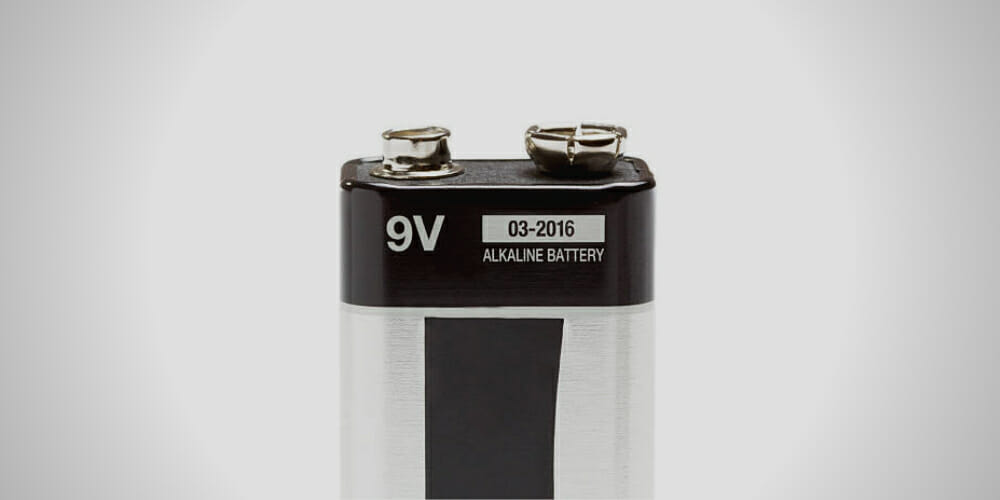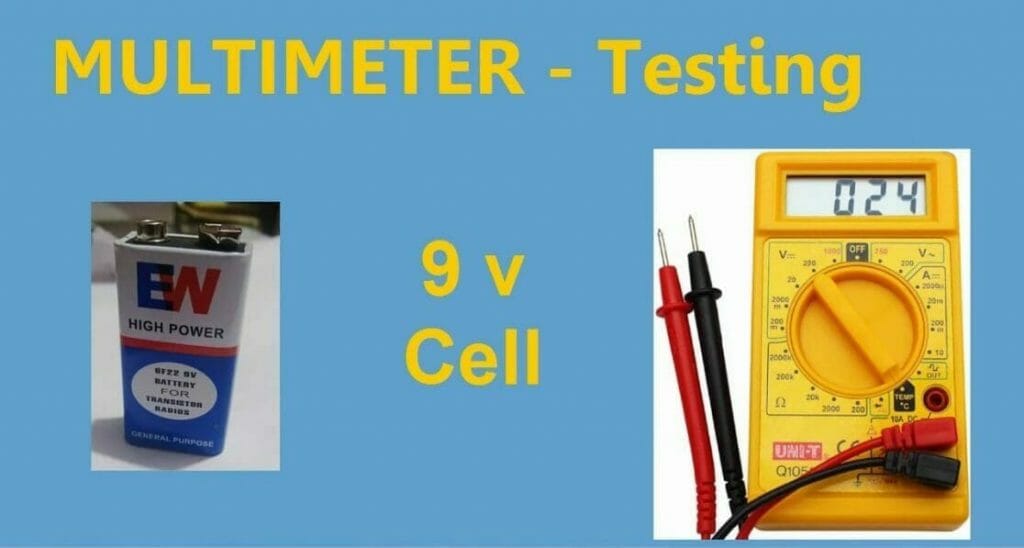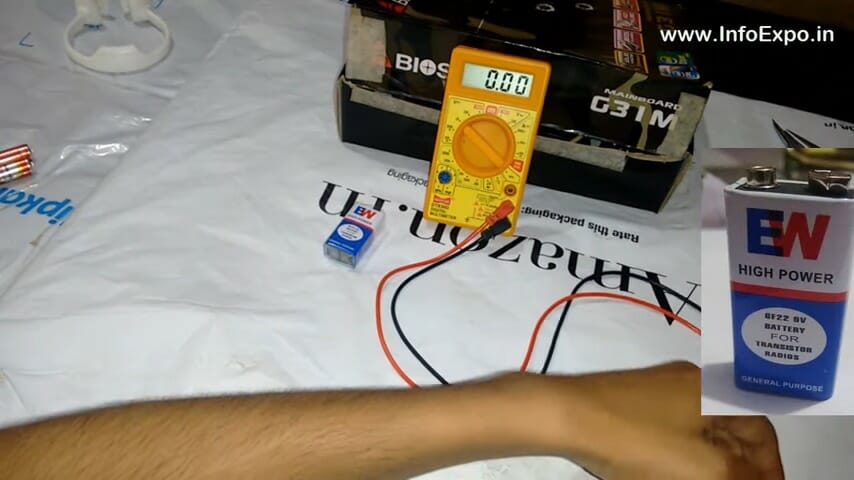Multimeter 9V Battery Test (How-To Guide)

There are a couple of ways of testing a 9-volt battery. This post focuses on digital multimeter usage to measure the Voltage and amperage of a 9 volts battery.
To test a 9v battery follow these steps. First, choose the DC function. You should expect 550mAh, 400mAh, 1200mAh, and 175-300mAh for alkaline, carbon-zinc, lithium primary, and NiMH batteries. So, depending on the type of battery set the DC function to a figure higher than what you anticipate. Next, connect the test probes as you did when measuring Voltage and check what’s on display. If, for instance, your battery has 550mAh, you won’t see the exact figure on the multimeter screen. It will fluctuate around a figure close to this.

What You’ll Need
You will need a multimeter and a nine-volt battery. It’s also important for you to understand if you are dealing with rechargeable batteries or otherwise. 9-volt rechargeable batteries are available in NiMH and lithium. (1)
Step By Step Guide For Multimeter 9v Battery Test – Measuring Voltage
- Grab the black and red leads of the multimeter. The black lead should go to the negative port and the red lead to the positive port. Some digital multimeter manufacturers label the negative port as ‘ground’ or ‘common.’ There is a metal probe at the end of each lead.
- Switch on the multimeter. Turn the selection knob of the multimeter to DC (direct current) setting. If your multimeter is like the many others in the market, the manufacturer used the capital letter ‘V’ plus straight lines above it to denote the DC voltage.
- Since we are testing a 9-volt battery, you can set the multimeter to measure a figure above 9 DC voltages. In this case, you may choose 20DC Voltage. Your multimeter should display a zero reading at this point.

- Grab the multimeter’s red probe and touch it to the 9-volt battery’s positive terminal. The black probe of the multimeter should touch the battery’s negative terminal.
- The reading on the digital multimeter screen is the Voltage of your 9-volt battery. If the outcome reads below eight volts, the battery is worn out and requires a replacement. An above 8 reading means that the battery has enough Voltage to continue accommodating your current load.
In many instances, the voltage measurement of a battery pack is sufficient to determine if it’s functioning properly. However, if you want to be certain that it can sufficiently supply current to a load, you may also consider measuring the amperage – mAh (mill ampere/hour).
Step By Step Guide For Multimeter 9v Battery Test – Measuring Amperage
- Choose the DC function. You should expect 550mAh, 400mAh, 1200mAh, and 175-300mAh for alkaline, carbon-zinc, lithium primary, and NiMH batteries. So, depending on the type of battery set the DC function to a figure higher than what you anticipate.
- Connect the test probes as you did when measuring Voltage and check what’s on display. If, for instance, your battery has 550mAh, you won’t see the exact figure on the multimeter screen. It will fluctuate around a figure close to this.
Wrapping Up
Test a car battery or any other battery pack to determine if its electrical energy is still intact or not. A battery generates and reserves energy for future use. The process involves a chemical reaction between two metals. (2)
As the name suggests, the 9V battery can only create nine volts. Electrical energy begins to flow due to the voltage difference between the negative and positive terminals upon installation in a device. Over time, the battery wears out and can no longer produce the nine volts it did before. In that case, the battery life is over.
Below are some other learning guides we’ve written for multimeter. Until our next article!
- How to test battery with multimeter
- How to test car battery with multimeter
- How to read an analog multimeter
References
(1) lithium – https://www.webmd.com/vitamins/ai/ingredientmono-1065/lithium
(2) reserves energy – https://www.sciencedirect.com/science/article/
pii/B978012370602750020X
